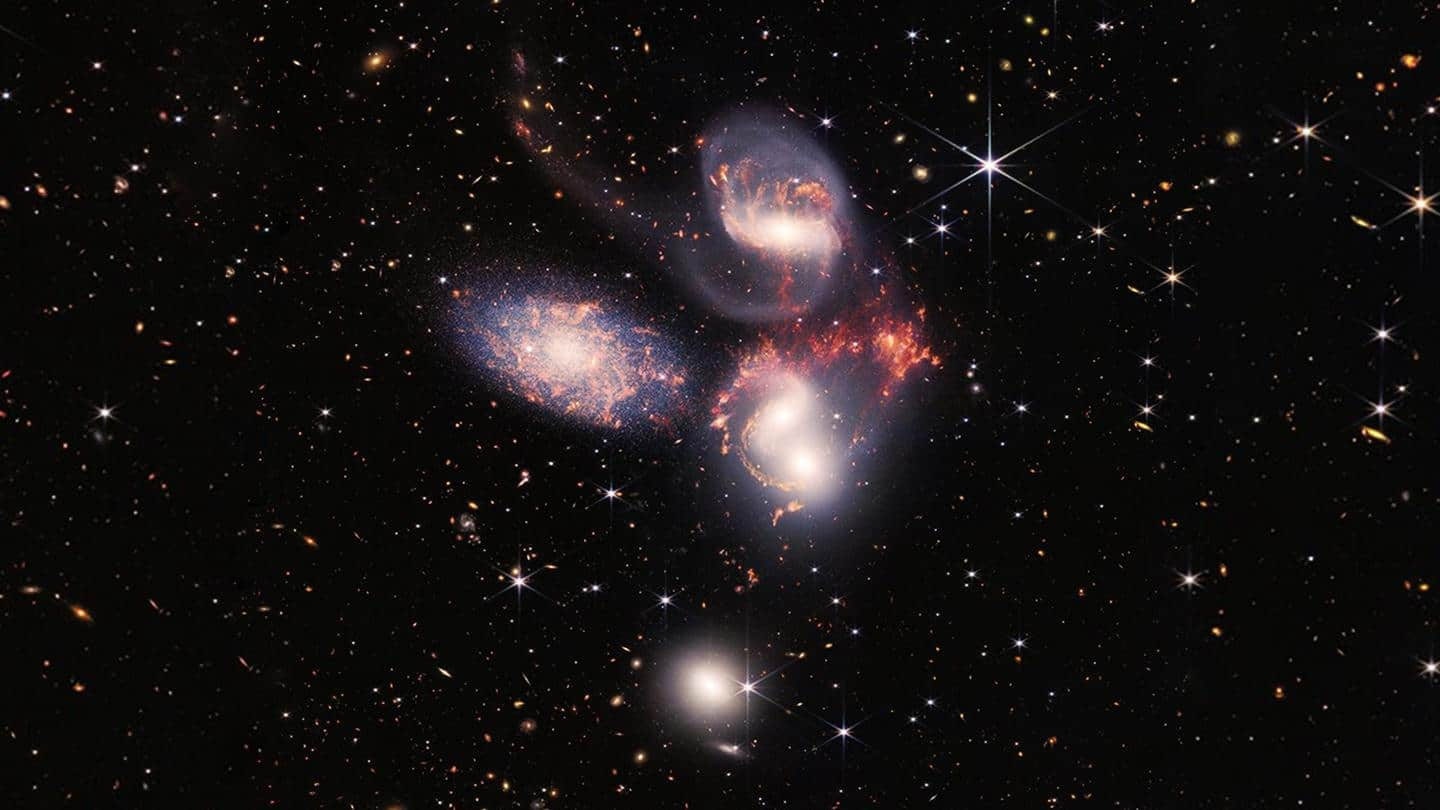
Breathtaking new images from James Webb reveal more about universe
What's the story
After the deepest and sharpest image of the universe, NASA has released images of other galaxies and exoplanets captured by the James Webb Space Telescope (JWST). As you can imagine, the new images from the most powerful space observatory built yet are as awe-inspiring as the first one. The pictures include Stephen's Quintet, a star-forming region in Carina Nebula, and the Southern Ring Nebula.
Context
Why does this story matter?
The first image from James Webb was a teaser of the telescope's capabilities. The next four have certainly proved that it is one of the most important scientific instruments yet. When the telescope was envisioned, we were not even aware of planets beyond our solar system. Now, with Webb, we are set to see more than we have ever seen of our universe.
Quintet
Stephen's Quintet has a black hole
Of the new images released, the most thrilling one is of the elusive quintets called 'Stephen's Quintets.' Situated 90 million parsecs away in the constellation Pegasus, the picture of this tightly packed cluster of galaxies reveals the formation of millions of young stars. This grouping also houses a black hole. Although it's not visible, you can see the cosmic monster swallowing material around it.
Carina nebula
Image of Carina Nebula shows 'cosmic cliffs'
In another picture, we can see the breathtaking Carina Nebula. The image captured by Webb of this star-forming region 2,300 parsecs away is exquisite in detail. We can see a gaseous cavity with dramatic peaks and valleys dubbed 'cosmic cliffs' around it. About the picture, NASA astrophysicist Dr. Amber Straughn said, "We see structures that we don't even know what they are."
Dying star
Southern Ring Nebula's image reveals last moments of dying star
Next up, we have an image of the Southern Ring Nebula which shows the opposite end of the stellar lifecycle compared to the Carina Nebula picture. Located in the constellation Vela around 770 parsecs away, it is a glowing shell of gas and dust hurtling away from a dying star. Webb even picked up a second star orbiting the main one.
Exoplanet
Researchers found fingerprint of water on a hot exoplanet
Finally, we have the least visually exciting but scientifically compelling image from Webb - a spectrum or chemical analysis of a distant planet called WASP-96b. Webb observed the planet that is extremely hot and is around half the size of Jupiter as it passed across the face of its star. In the chemical analysis, researchers found the presence of water vapor.
Information
Webb will help in looking for life-friendly planets
Researchers have always wanted to do spectroscopy from the ground but haven't been able to do so until now. With Webb, looking for life-friendly conditions on exoplanets will be much easier. Who knows, we may even find a new earth.